Summer skies and fruit-laden trees paint a picturesque backdrop for the red-tiled spacious palace with dazzling white walls at Kilimanoor, about 33 km from Thiruvananthapuram. Built in the architectural style native to Kerala, the palace is serene with wide verandahs, courtyards and long corridors.
Kilimanoor Palace. , Photo Credit: Sreejit R Kumar
It was in this bustling palace that eminent artist Raja Ravi Varma was born on April 29, 1848, to Ezhumavil Neelakanthan Bhattathiripad and Uma Ambabai Thampuratti. As a child, the little prince loved to draw and work on the walls with charcoal. He remained in the palace and was educated under his uncle’s watchful eyes, until at the age of 14 he was taken to Thiruvananthapuram by his uncle Raja Raja Varma, to present him to the then Emperor of Travancore, Maharaja Ayilyam Thirunal. Taught him the basics of painting.
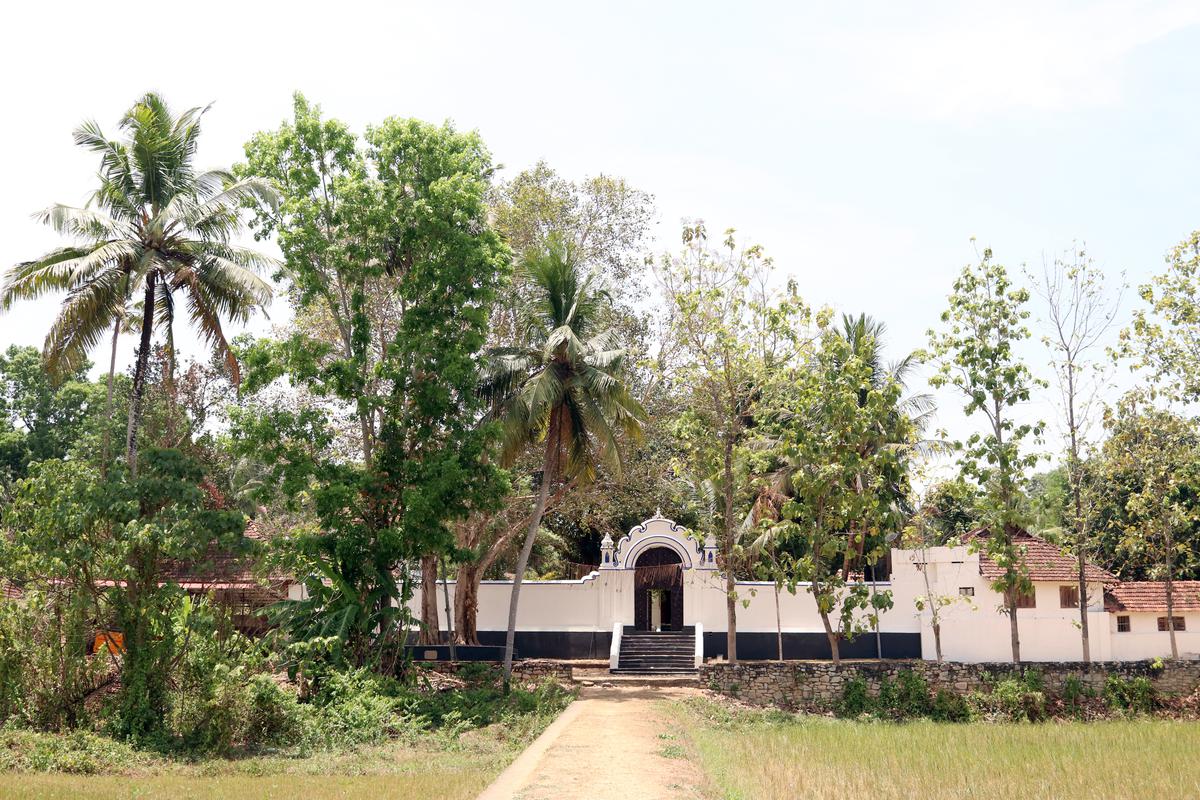
Kilimanoor Palace, about 33 km from Thiruvananthapuram Photo Credit: Sreejith R Kumar
It is easy to imagine the palace as it was at the turn of the century. Little seems to have changed and the only outward sign of modernity is a bright yellow school bus parked in the grounds of the Palace.
The majestic archway to the palace leads to a sunlit room with an easel in one corner, near a large stained glass window. Overlooking flowering gardens and emerald green paddy fields, the studio offers panoramic views of the surroundings.
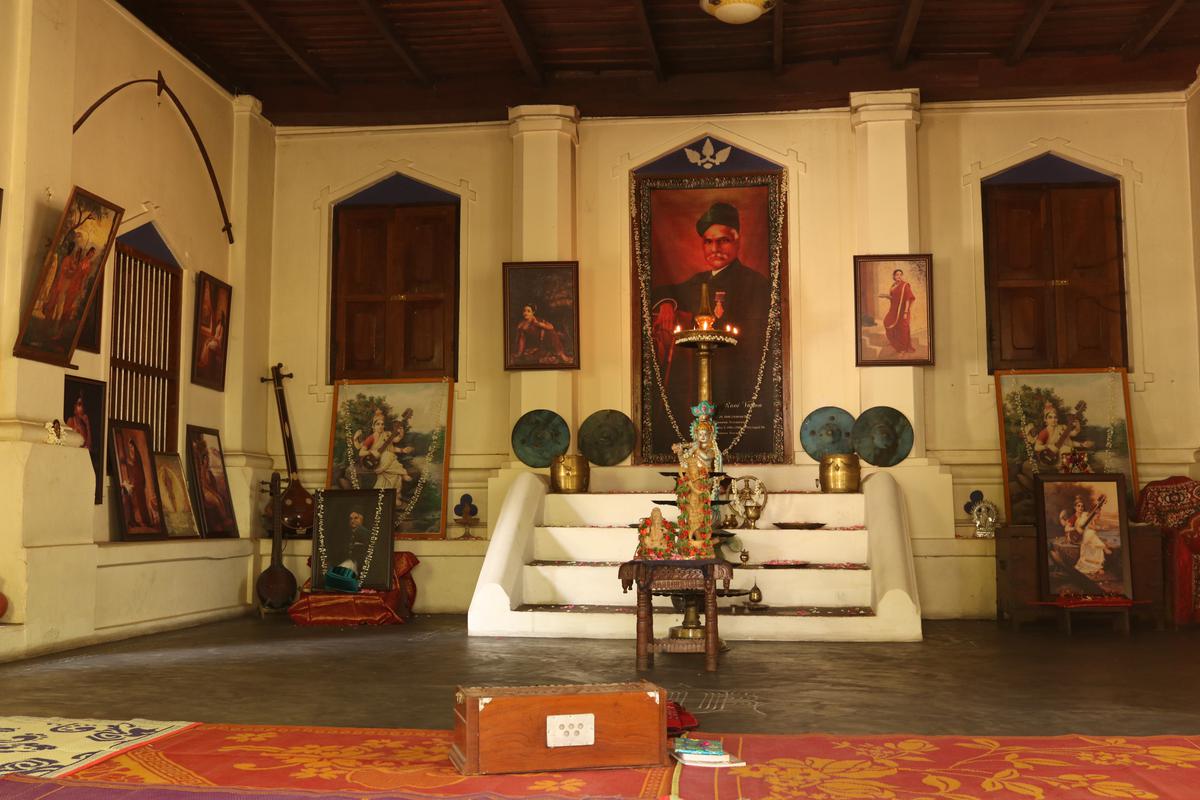
Raja Ravi Varma’s studio at Kilimanoor Palace, 33 km from Thiruvananthapuram Photo Credit: Sreejith R Kumar
It was in this serene atmosphere that artist Raja Ravi Varma painted some of his masterpieces. The studio, called Chitrashala, which he designed, was built around 1875 as an extension to Pazhayamalikaka, where he resided. In the north-east corner of the studio where a dusty, old easel stands, are huge stained glass windows that flood the room with sunlight.
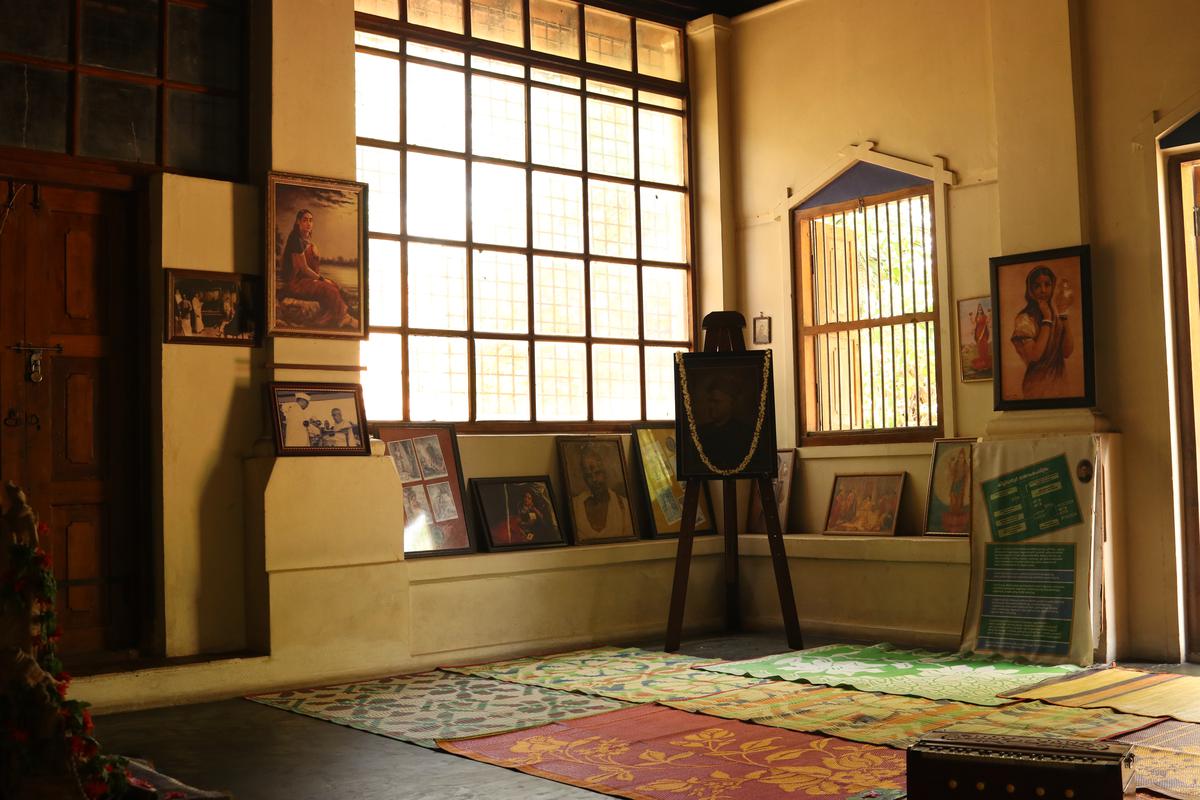
The easel used for Raja Ravi Varma in his studio at Kilimanoor Palace. , Photo Credit: Sreejit R Kumar
It is said that Ravi Varma used to stand here from morning till evening and paint in the natural light. His disciple and younger brother Raja Raja Varma used to accompany him as he sketched the outline on canvas and planned a painting. The studio was bustling with his assistants and students who helped him complete his work. A photo in the studio shows the artist resting on a low bed, listening to recitations from epics and other religious texts.
Presently, there are prints of some of his famous paintings, some photographs, a majestic portrait of the artist and a marble bust of his younger sister Mangala Bayi. Paint brushes and a palette are kept near the easel.
diverse flora
There is a spring of colors outside the studio. The diverse flora surrounding the palace influenced the royal artist’s masterpieces. Fragrant jasmine and creamy white frangipani, grand banyan trees, swaying coconut trees, blood-red hibiscus flowers, broad banana leaves and delicate tendrils of vines added texture and influenced the palette of their colours.
nadakasala At Kilimanoor Palace | Photo Credit: Sreejit R Kumar
studio leads to a long corridor and a nadakasala Where Kathakali recitals, Koodiyattam and musical programs were held. “Ravi Varma’s paintings based on Hindu mythology may have been influenced by the powerful scenes he saw in the Kathakali plays staged here,” says Rama Varma Thampuran, secretary of the Kilimanoor Palace Trust, which looks after the studio and maintenance of the palace .
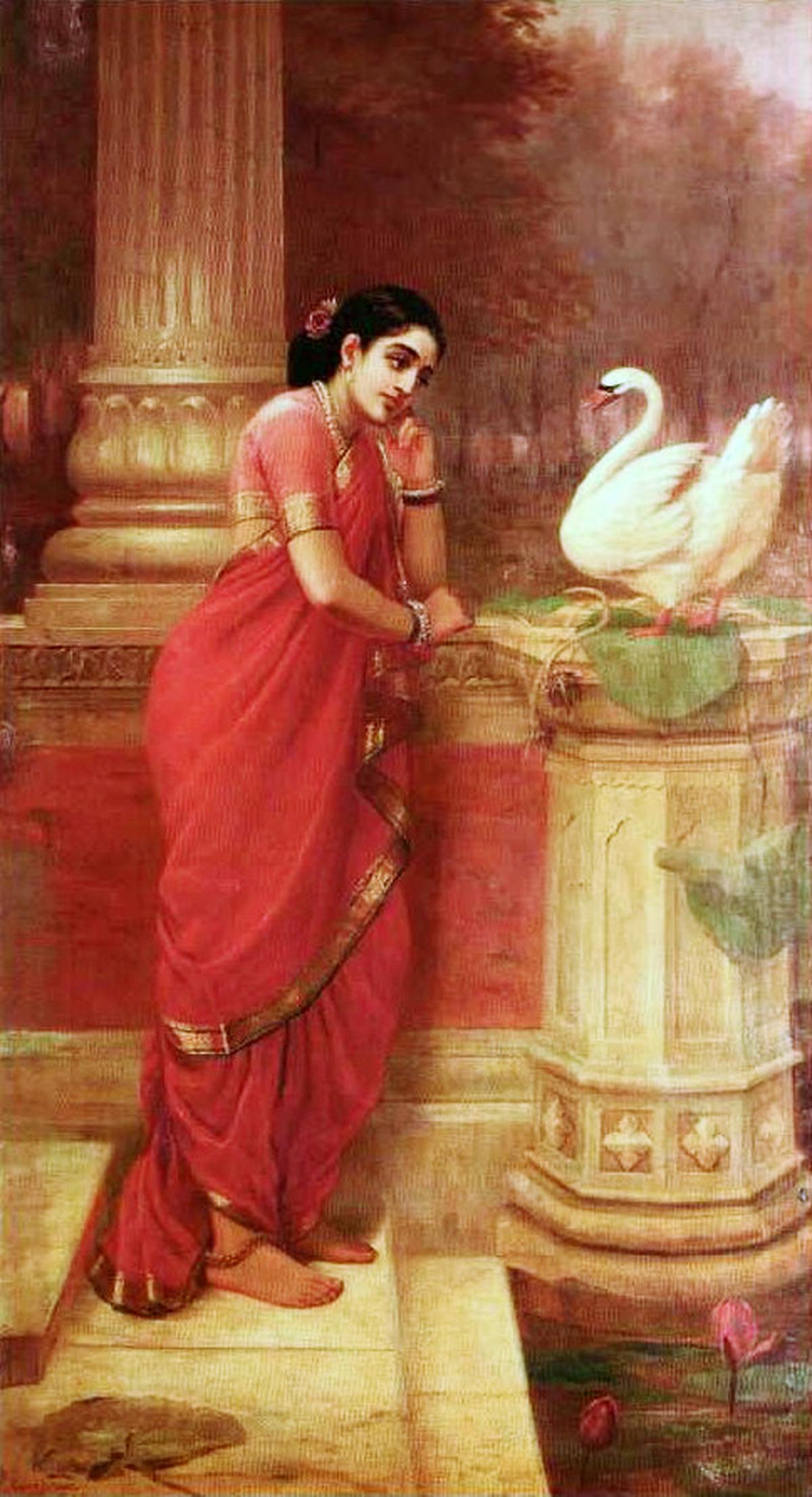
Hans Damayanti, Raja Ravi Varma’s masterpiece | Photo Credit: Sreejit R Kumar
He states that Ravi Varma was well versed in Hindu religious texts and epics. He is said to have composed poems in Sanskrit and Manipravalam. Furthermore, his paintings of Hindu deities were based on verses describing them. This shows how familiar he was with the verses. Without reading Kalidas closely shakuntalamOr how could he paint such magnificent pictures based on dramas and epics like the Mahabharata and the Ramayana?” he ponders.
After Ravi Varma’s younger brother and close associate Raja Raja Varma passed away unexpectedly, the artist was devastated and is said to have decided to return to his ancestral palace.
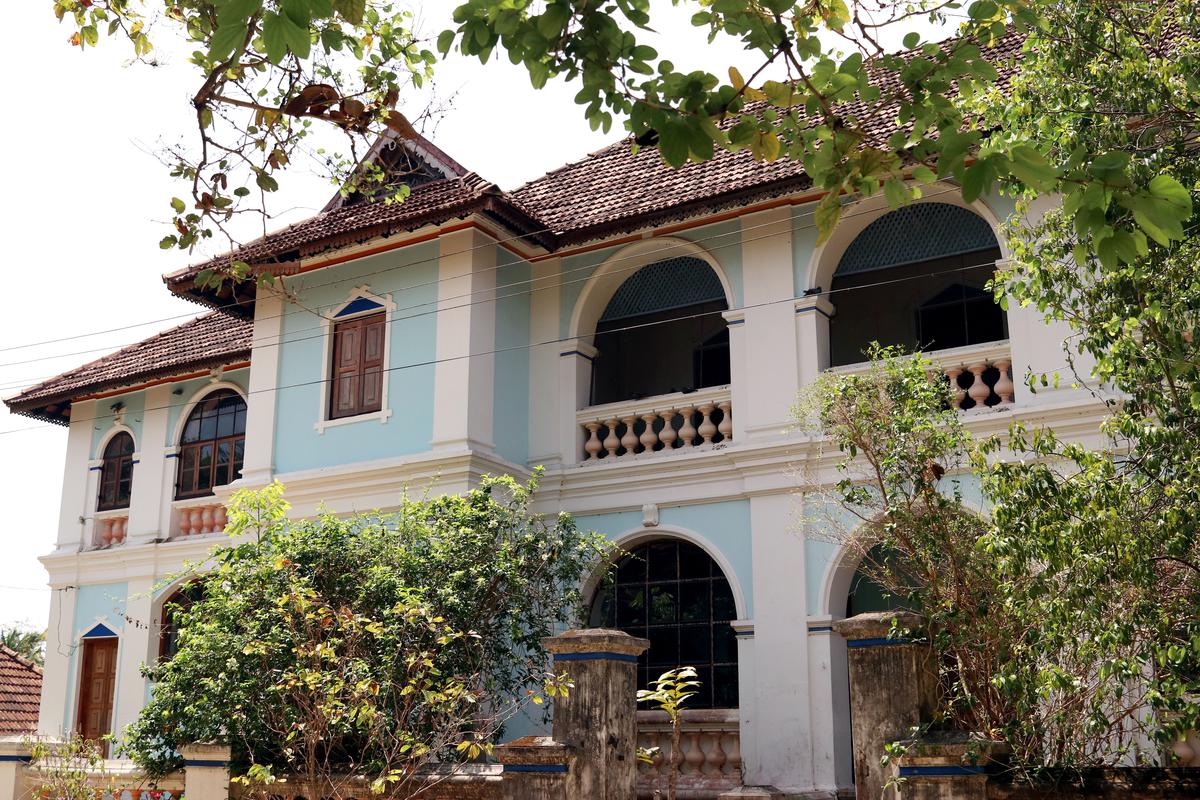
Puthenmalika in the premises of Kilimanoor Palace. , Photo Credit: Sreejit R Kumar
it was his great wish Art gallery in Thiruvananthapuram but the then administration did not take his plea seriously. Thampuran says that towards the end of his life, this iconic artist, who had admirers in the farthest corners of India, wanted a gallery in Kilimanoor to house his creations. Next to the structure housing the studio is a more recent building, Puthenmalika, which was built by Ravi Varma with money from the sale of his works. “It was supposed to be a gallery to display his works and also a place for his royal friends to stay when they were to come here for their 60s. th birthday. Unfortunately, he passed away before his wish could be fulfilled on October 2, 1906,” says Thampuran.
A copy of Raja Ravi Varma’s painting Gypsy. , Photo credit: Vipin Chandran
After the Sree Chitra Gallery was opened in Thiruvananthapuram in 1935, Kilmanoor Palace lent 100 to 120 works of the artist to the gallery in 1941 as a permanent loan. The Palace houses a half-finished painting of a Parsi woman, Thampuran says.
However, even today the spirit of the great artist seems to fill the space. Every tree and room seems to have some significance in the life of the artist, who spends most of his life traveling to different places in India in connection with his work.
Where can you see Ravi Varma’s original collections?
Sree Chitra Art Gallery in Thiruvananthapuram
Laxmi Vilas Palace in Vadodara, Gujarat
Jagmohan Palace Art Gallery, Mysore
The lush greenery surrounding the palace includes sacred groves and temples. Family stories say that his mother, after worshiping at a temple, was going around a banyan tree that was haunted by a ghost. The family’s belief is that the child was blessed by the spirit.
While taking us for a walk around the sprawling compound, Thampuran points to the banyan tree that towers over us. Dry leaves rustle and crumble as you move around this space full of trees, shrubs and vines. There is a temple near the banyan where he was exorcised.
“Umabai herself was a scholar and poet who knew the medicinal values of many plants and herbs. It is quite possible that she passed on her love for nature to her eldest son,” believes Thampuran Is.
artistic heritage
He claims that despite financial constraints, the Palace Trust has taken utmost care to preserve the legacy of the great artist. “We want to preserve Raja Ravi Varma’s birthplace and his studio for posterity. As far as I know, the only other studio where Ravi Varma has worked is in Vadodara. While his paintings command crores in the international market, it is important to understand that it was from here that the great artist began his artistic journey.
The Palace Trust has drawn up elaborate plans to celebrate his birth anniversary on 29 April. Governor Arif Mohammad Khan will unveil an unfinished painting of a Parsi woman and a portrait of Thriketa Thirunal Uma Bayi Thampuratti.